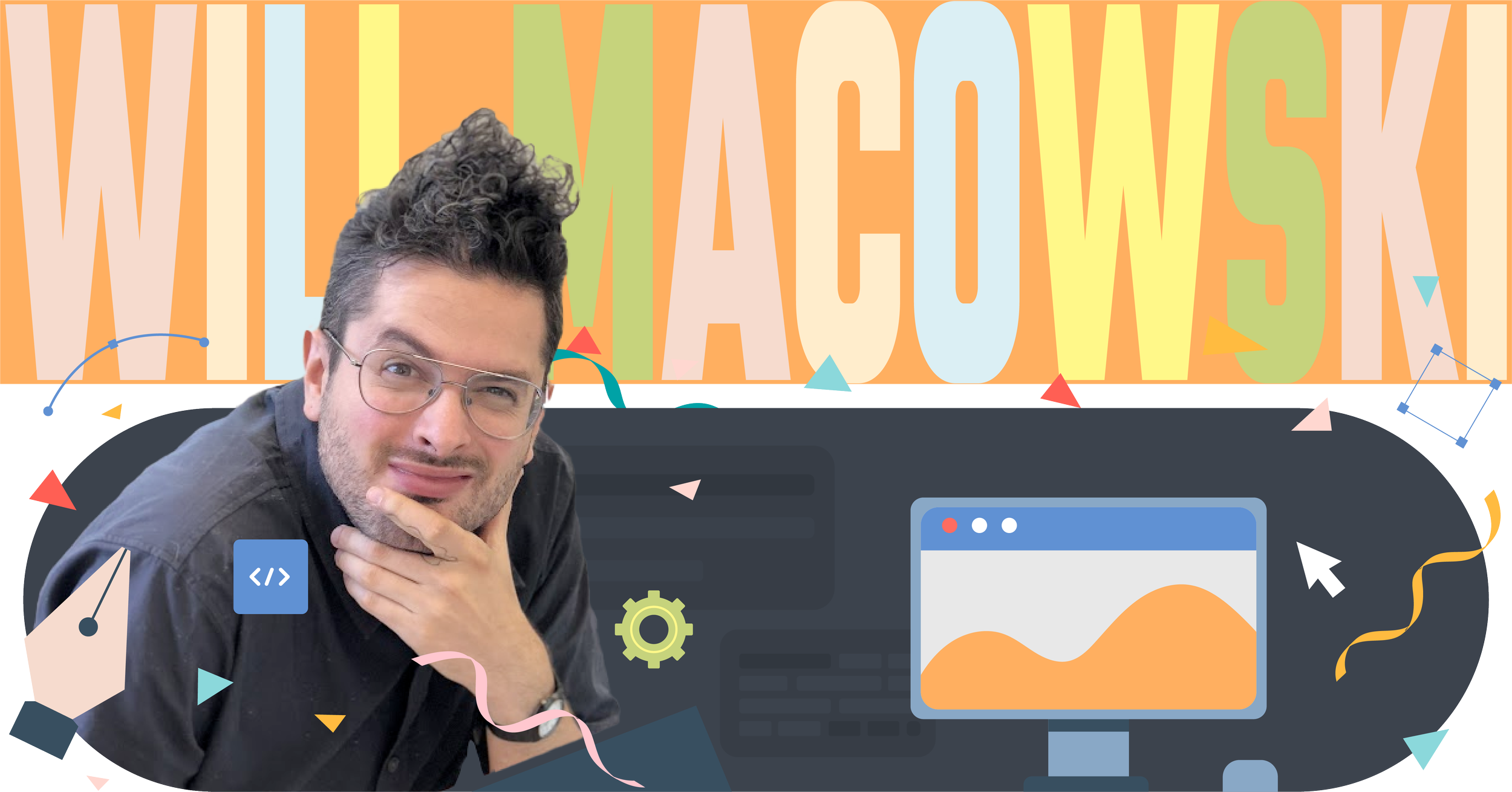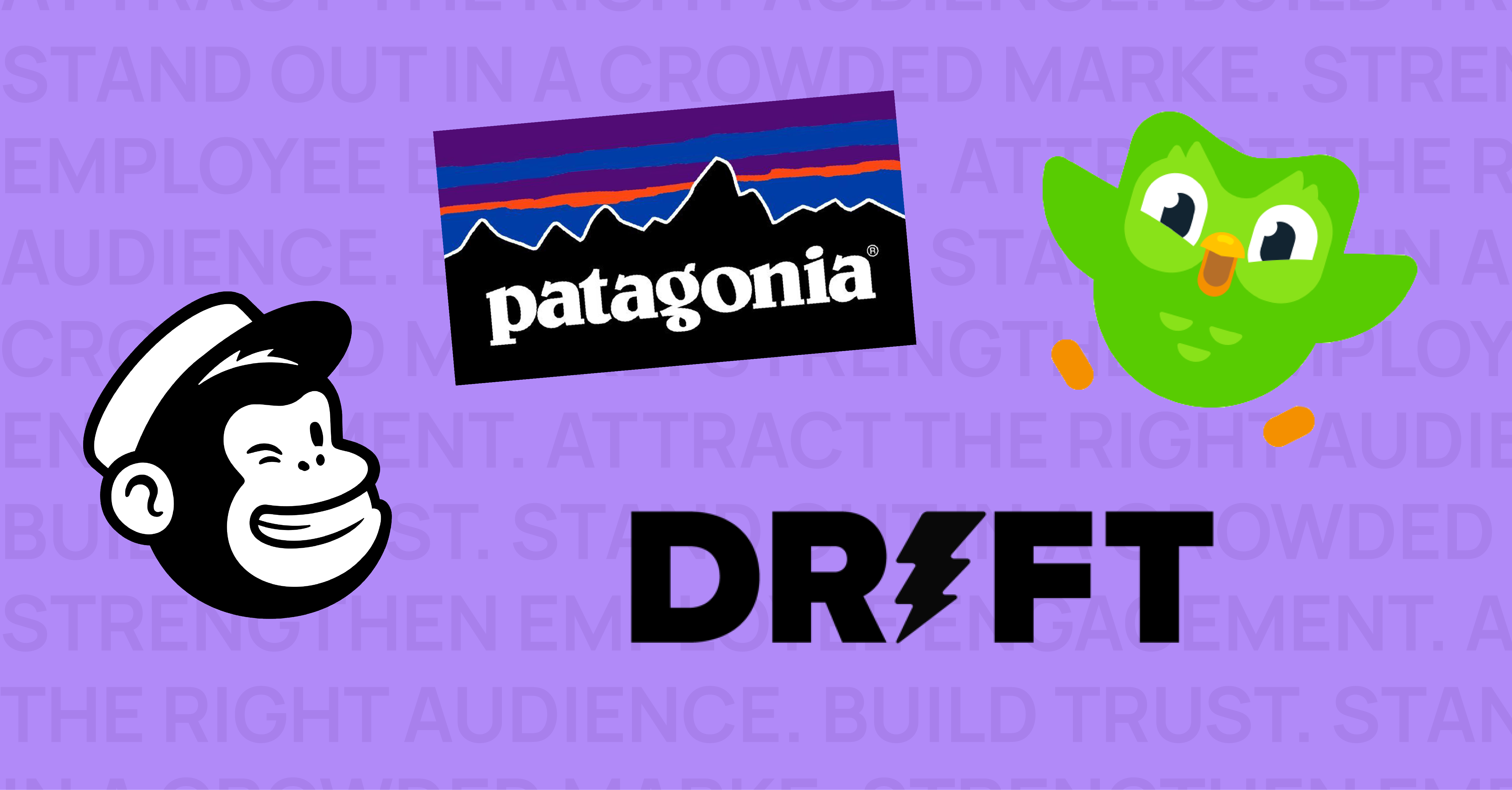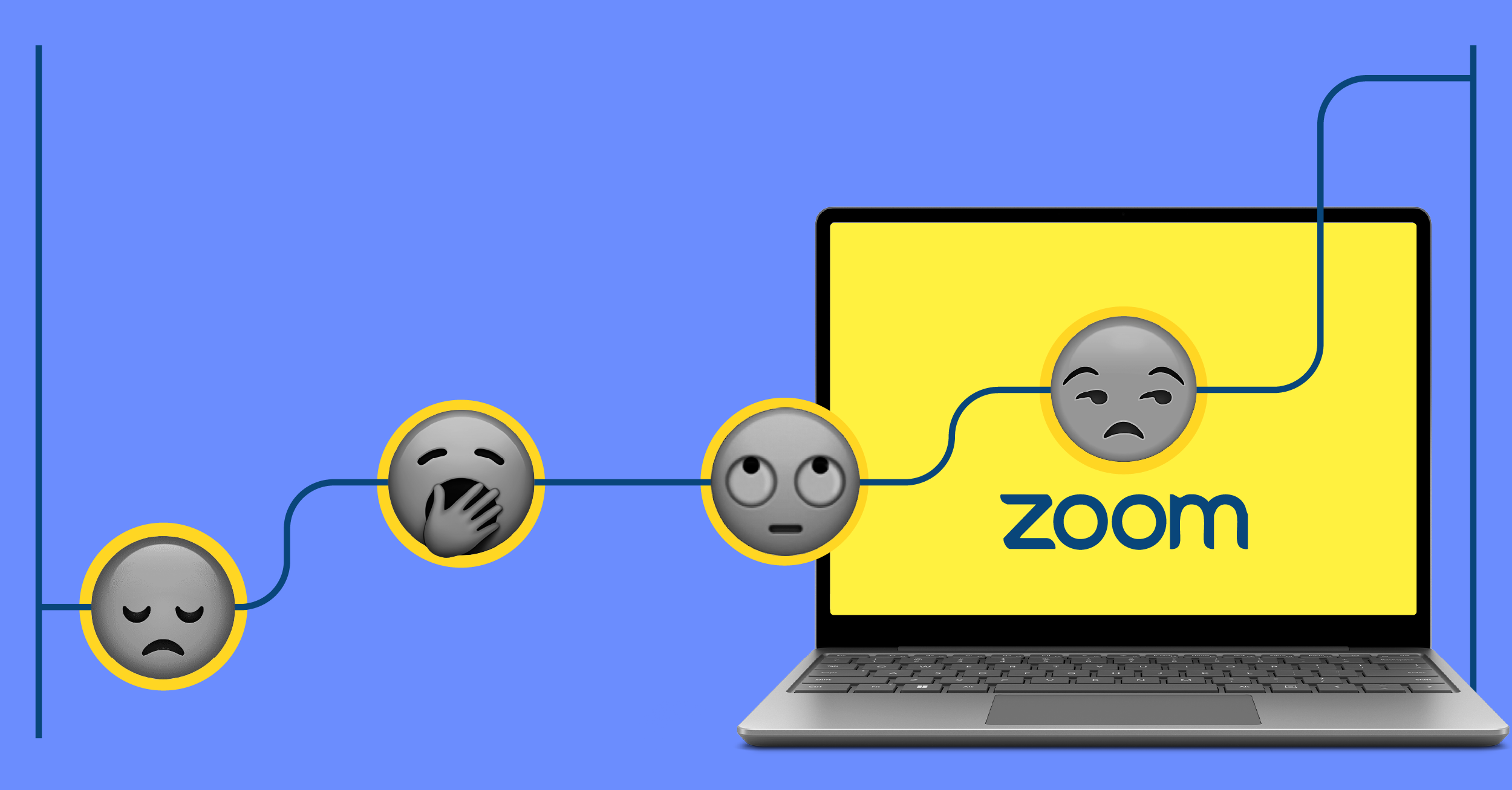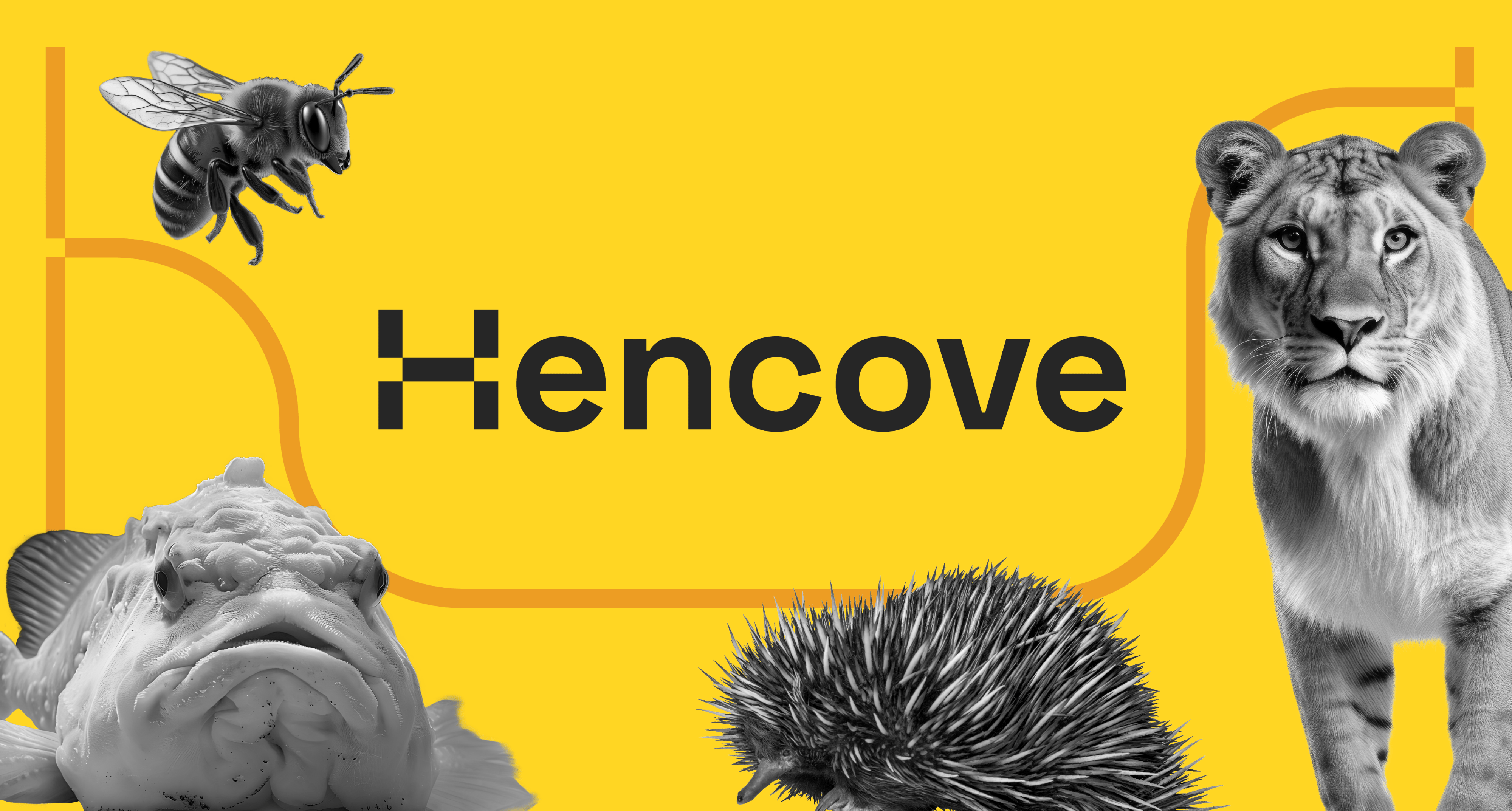If you’ve ever been a recipient of our creative work, chances are that Will Macowski put his stamp on it. Since becoming Hencove’s first in-house designer six years ago, Will has worked on countless design projects and helped multiple clients push their creative limits. Today, as Senior Creative Director and leader of Team Blobfish, Will oversees a variety of client projects from pitch decks to rebrands—and everything in between. Not only has his creative genius wowed our clients and their customers alike, but his humor, humility, and dedication to Hencove have also made him a colleague that earns the respect and trust from all around him.
Earlier this month, we sat down with Will to chat about the early days of Hencove, his most improved professional skill, what grinds his gears, and much more. Enjoy!
Mary: How did you first learn about Hencove? Tell me about the road that led you here!
Will: About eight or nine years ago, I was working as a graphic designer at a small firm in New York City and we took on Hencove as a client. Daniel had recently founded Hencove and was outsourcing the design work, and I was their main point of contact within my firm. After a while, Daniel asked me, “I want to hire an in-house designer. Could you give me advice on how I can find someone that’s exactly like you?” And I was happy to help out. One way or another, he got ahold of my personal phone number and email address and started slipping into my DMs.
A little while later, Daniel was traveling to New York for a client, and we decided to meet up. We got to chatting and he ultimately asked me if I wanted to come up to Boston to join the team, and I said yes.
Mary: How has your team and your role evolved since joining?
Will: I joined Hencove when we were still a team of five. The culture has always been one of collaboration and it still is — only with a larger team and more structure. Early on it was very amorphous; we didn’t have separate teams like Bees and Blobfish, it was just the whole team collaborating and sharing thoughts on everything.
My role has evolved a lot since then. Now, I have a super talented team of direct reports with a range of skill sets. I’m doing less hands-on work and more growth-oriented mentorship, strategy, and broader creative thinking. My responsibility has shifted from directly working in Adobe creative suite, to working with Hencove’s “creative suite” of amazing designers, animators, and developers. So much of my capacity is dedicated to working with my direct reports, finding and creating opportunities for growth, and building an environment where we can collaborate and work together to make things that rock.
Mary: What is a skill that you have improved or learned since joining Hencove?
Will: Communication. I always say that communication is the most important thing in our business, regardless of what role you play. As marketers, we need to communicate externally to our clients, give them the tools to communicate externally to their audience, and communicate effectively internally in order to succeed at any of it. Communication is a soft skill that’s hard to learn and develop because it requires experience which can only be had over time. The variables are broad: the person or audience you’re communicating to, their industry, role, personality, mood, and life experience… It’s the hardest thing to do as a professional. Hiring my first direct report some years ago opened up a whole new range of experience and perspective, and I’m still learning and improving as time goes on.
Mary: As Creative Director, how does your team and role support B2B marketing?
Will: How does it not? Creativity is essential in marketing. It’s woven into every part of the process, from discovery to strategy, and copywriting to design. Communicating in creative ways, whether verbal, written, or visual, enables us to learn new things, explore new ideas, and grab attention from our audience.
In B2B creative, there is a tendency to assume we need to fit some sort of mold — more buttoned-up or safer, business-y or professional. There’s this inherited ‘comfort-zone’ for many B2B companies that results in a small box in which creative thinking can happen. This is why I love it. On a daily basis, we are pushing these boundaries further. The challenge is always to see how far we can go, what new things we can try, and how we can help our clients and their brands set themselves apart. The change is always drastic and it’s so satisfying to see that impact.
Mary: Which types of client projects excite you the most?
Will: Big ones. Branding projects come to mind first because we enter at the ground level. We’re able to exercise complete creative control over the exploration, development, and implementation of a company’s entire look and feel. Collaboration throughout the process — with our internal creative team and with our clients always yields new ideas and challenges which makes the end result more rewarding.
Website projects as well, simply because I love the medium. As a designer, it’s one of the most robust instances of implementing a brand. As a developer, weighing the technical limitlessness and practical limitations is a massive puzzle that is SO satisfying to solve. And as a user, we’re creating a whole new experience and putting it out there in the world — It’s something to interact with rather than simply consume.
Lastly, pitch decks. I enjoy planning out ways to deliver a message and to “make the case” for a product or service — It’s a unique challenge in itself. The added complexity of needing to both support a talk track and stand alone as a leave-behind is a fun problem to solve. From a design perspective, it puts emphasis on information hierarchy — I love addressing the paradox of wanting to get all of the information in there, but also simplify and make things easy to understand. The software limitations of PowerPoint/Slides/Keynote also create a fun challenge — How can we design in this limiting program, make things easy to edit, and have it still look impressive?
Mary: What is one thing (e.g. app, software, etc.) that you couldn’t do your job without?
Will: The Notes app. I make lists for everything. I plan out every day with a list for both work and personal, of what to get done and in what order.
Mary: Are there any brands you look to for inspiration? Or just admire?
Will: This might seem hyper-specific, but I find myself always referring back to stripe.com. I just love its design, it’s clean, vibrant, and simple with touches of motion and interaction. I also regularly read Brand New. It features the most exciting recent rebrands, provides commentary, and feeds for community critique. I’ve also attended their design conferences in the past — Brand New Conference and First Round.
Mary: What advice would you provide to someone interested in joining the Blobfish team?
Will: I would say, be humble and open to learning. Since we are such a small team, we’ll all wear multiple hats at different times. It requires we try new things and provide and receive constructive feedback. We’re all working on the same team — so a willingness to fill in the gaps or branch out of your comfort zone for the greater goal is essential.
Mary: What’s your biggest design-related pet peeve?
Will: They often pop up as I’m reviewing work or providing feedback, so it’s difficult to recollect on the spot… Not using type styles comes to mind FAST. Incorrect [or no] usage of a grid. Right-aligned text. A big one that also comes to mind: Not knowing, or not being able to articulate why you made a design decision. It doesn’t “peeve” me per se, because it’s a learning opportunity. But it’s something I will harp on. Lastly, only providing praise in a design critique will get me. It’s nice but does little by the way of helping us improve… It’s not called a design pat-on-the-back.
Mary: Okay now time for some fun questions! What is your favorite movie? Podcast?
Will: My favorite movie is Adaptation — a masterpiece written by Charlie Kaufman. It’s about a screenwriter tasked with writing a movie about a book, weighing the priorities of the studio and his own creative struggle — with the end result being the movie that you’re watching — You’re witnessing the creative process and consuming the output at the same time. My favorite podcast is Sword and Scale, and I would recommend it if you like true crime. The host, however, is insufferable… So that’s a bummer.
Mary: Who is a historical figure you would have dinner with?
Will: Marcel Duchamp, a major figure in the Dada art movement. Dada served as an inspiration to me since I learned about it in college. The movement challenged what could be considered art, breaking boundaries, challenging norms, and constantly questioning conformity. It’s a criticism and a commentary that reminds me to ask questions and have my own answers.
Mary: What song would you pick as your theme song?
Will: Porcelain by Moby. For me, it conjures this magical scene in the movie The Beach — where they just come upon this hidden paradise. Listen to it yourself and channel young Leo DiCaprio or Tilda Swinton in her prime.



